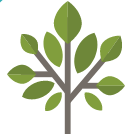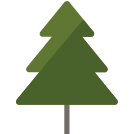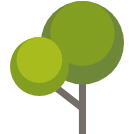Activity 1: Forests and Society – Social, Economic, and Environmental Balance (Infographic)
Forests are valuable for many reasons. Why is it important to accommodate the needs of all stakeholders? How can we balance the diverse social, economic, and environmental considerations?
In this activity you will consider multiple perspectives relating to forest management. Note, in addition to the below infographic, the handout references the Work Wild Video Series which you can access through the links below.
Forests and Society Infographic
Make your way down the Work Wild interactive graphic to find important stats and insights regarding the impact of forests and forestry in Alberta. Use this information to put together strong arguments for your Activity 1 discussion assignment.
19,000
Direct Jobs

38,000
Indirect Jobs
A Career with Many Branches!


Environmental Science
Environmental Science
Foresters
Forest Technologists
Wildlife Biologists
Hydrologists

Skilled Trades
Skilled Trades
Industrial Mechanics
Electricians
Heavy Duty Mechanics
Instrumentation Technicians
Welders
Saw Filers
Plumbers

Engineering
Engineering
Chemical
Electrical
Mechanical
Environmental
Civil

Equipment Operations & Mill
Equipment Operations & Mill
Harvesting Operators
Truck Drivers
Lumber Graders
Labourers

Office
Office
Management
Sales
Accounting
Human Resources
Communications
Beyond Lumber & Paper
How many of these products did you know were made from trees?
Hover over the trees to find out!

Toothpaste

Lumber

Toilet Paper

Makeup

Plastics

Paper

Rayon Material

Adhesives

Condiments
$7 Billion
The annual value of forest product
manufacturing in Alberta. A significant
amount is exported to countries like
the United States and Japan.
$537 Million
Tax revenue generated from forestry
in Canada.
We Manage Our Forests Through
Detailed Plans
The followig factors and perspectives must be considered.

Wildlife Habitat
Wildlife Habitat
Forests are home to many organisms, from mammals to birds, fish to fungi, and insects to amphibians. Special care is taken to protect sensitive ecosystems.
Watershed Protection and Maintenance
Watershed Protection and Maintenance
Trees and water are deeply interconnected because trees store and filter water. Regulations prevent the harvesting of trees in close proximity to rivers, lakes, and other bodies of water to protect water quality and quantity.
Air and Soil Quality
Air and Soil Quality
Trees produce oxygen and store CO2. They also enhance soil quality. When fallen needles and leaves decompose, they enrich the soil.
Slowing Climate Change
Slowing Climate Change
Forests are referred to as “carbon sinks” because they absorb carbon dioxide from the atmosphere. You may be surprised to know that even after it is harvested, wood continues to sequester CO2.
A Renewable Resource
A Renewable Resource
While we harvest trees for a variety of uses, forests are a renewable resource that grow back. Sustainable forestry is about ensuring we don’t harvest trees any quicker than they can grow back. Less than 1% of our forests can be harvested in a single year.
Recreation
Recreation
Many people enjoy escaping to the great outdoors. Forests are widely used for hiking, camping, off-road recreation, and bird watching.
Traditional/Cultural Uses
Traditional/Cultural Uses
Indigenous peoples have a historic cultural and spiritual tie to their traditional lands. Many exercise their rights to hunt, fish, trap, and use the forest as a source of traditional medicines.
Tourists
Tourists Love Trees
Tourism is among Alberta’s four largest industries. Our forests and national parks are one of our major attractions.